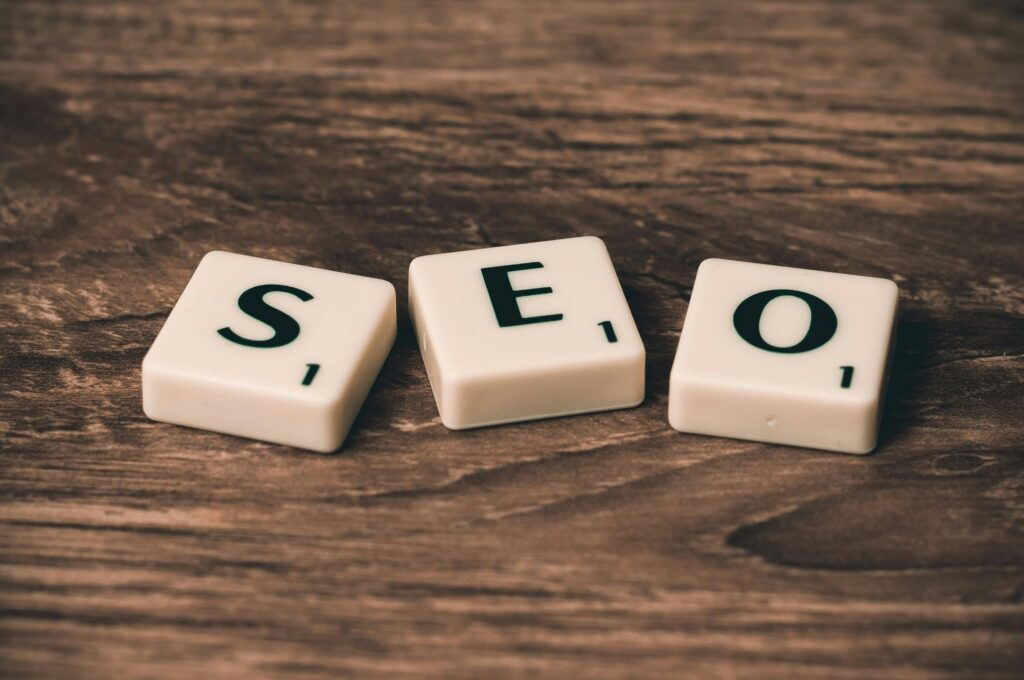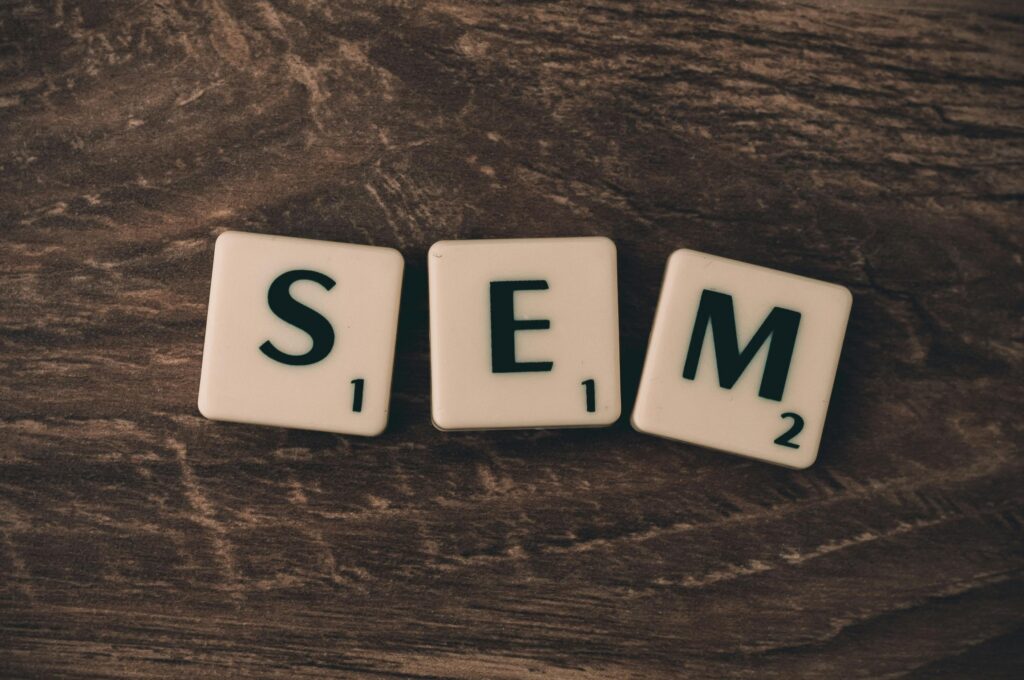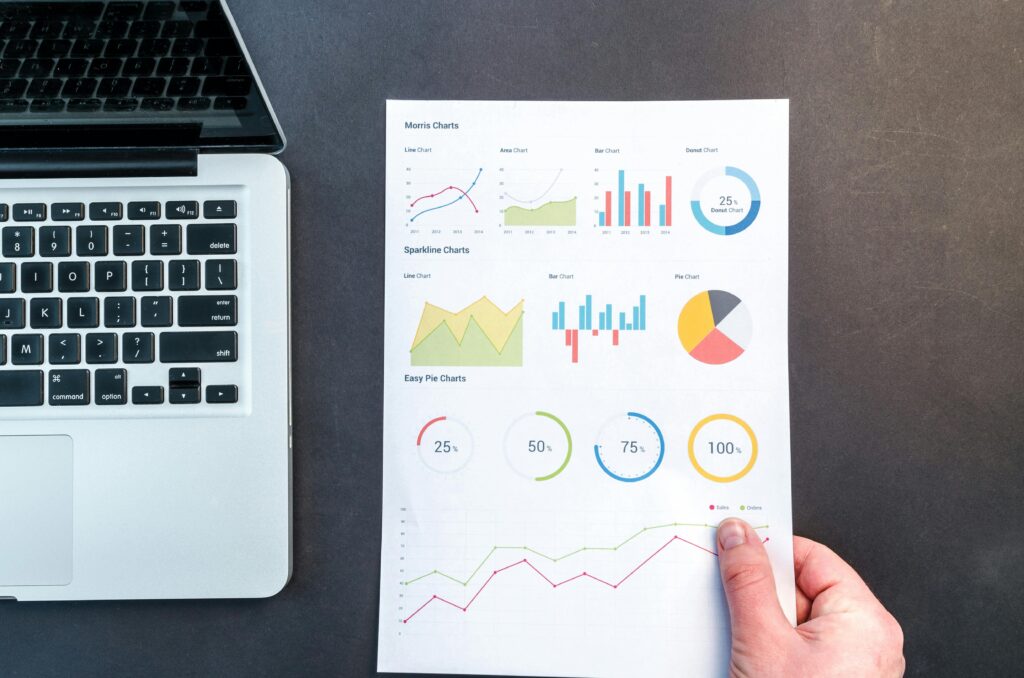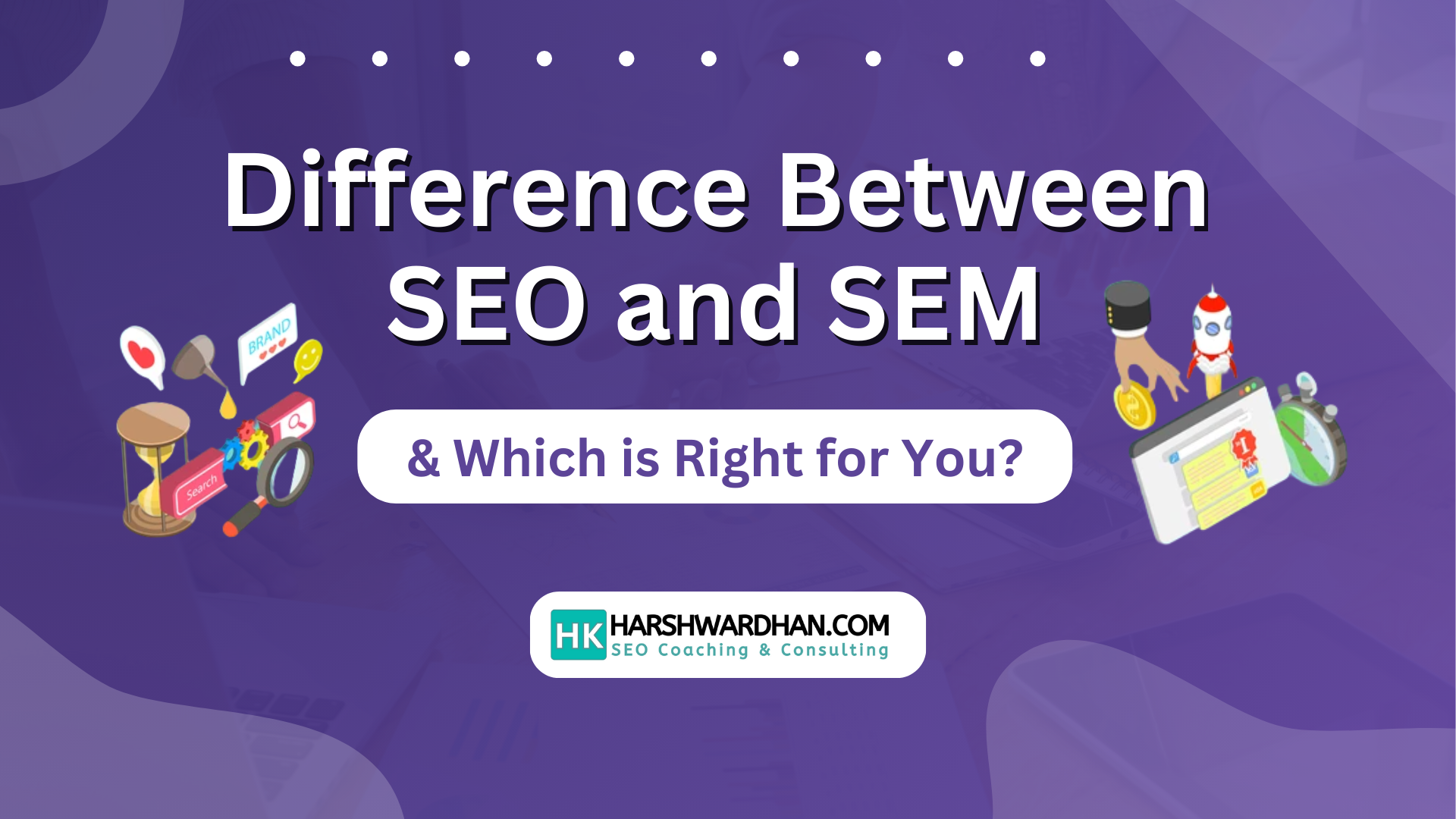The main difference between SEO and SEM is that SEO focuses on enhancing your website to achieve better rankings in search results, while SEM combines both organic and paid search methods to increase traffic and improve rankings.
Both SEO and PPC are methods to promote your business on search engines, making them forms of search engine marketing (SEM).
In this guide, you’ll discover how to develop a successful SEM strategy to boost traffic to your website.
But before diving in, let’s cover the basics:
What is Search Engine Optimization (SEO)?
SEO is a digital marketing approach that focuses on consistently improving your website to achieve better rankings in organic search results.
SEO includes a variety of tasks aimed at enhancing your visibility in search engines, both on your website and across the web.
SEO Overview

Keyword Research
Before starting any SEO work, it’s essential to understand what keywords users are searching for. These keywords are the foundation of your on-page SEO strategies. Fortunately, various SEO services can help you find high-volume, low-competition keywords in your niche. These are ideal to target since they have a lot of search interest but not much relevant content addressing them.
However, using these keywords isn’t just about inserting them into a blog post and considering the job done. Search engines prioritize valuable content over keyword-stuffed text. Part of your keyword research should involve understanding user intent and creating content that meets that intent. This highlights the difference between SEO and SEM, where SEO focuses on organic search visibility through quality content tailored to user needs.
On-page
On-page SEO involves optimizing elements on your website, such as revising the title tag, creating fresh blog posts, or enhancing page loading speed. Since these changes occur directly on your site, you have full control over the on-page SEO process.
Off-page
Off-page SEO involves activities outside of your website to demonstrate to Google that your pages are worthy of ranking. One of the most powerful off-page SEO strategies is building high-quality backlinks since they are among Google’s top three ranking factors. Backlinks serve as endorsements from other websites.
For instance, if this article receives backlinks from well-known SEO sites, it signals to Google that industry experts are endorsing our content, suggesting it deserves to rank. Understanding the difference between SEO and SEM is essential, but focusing on off-page SEO and acquiring backlinks is key to boosting your site’s visibility.
Technical SEO
Technical SEO ensures that search engines can locate, crawl, and index your content. Without these three steps, your content is unlikely to rank in the SERPs. For instance, if search engines were blocked from crawling this article, they wouldn’t be able to see the content, making it difficult for them to determine what it should rank for.
Consequently, it would likely not appear in search results. Following SEO best practices in technical SEO is crucial to ensure your content is visible and can rank effectively.
User Interaction Signals
How users interact with your site helps Google determine if your page is a good fit for their search. For example, if your page has a high bounce rate, it might signal that your content isn’t answering the user’s query. When this happens, Google might lower your ranking on the search engine results page, potentially pushing you off the first page entirely.
Understanding the difference between SEO and SEM is important here—while SEO focuses on optimizing your site to rank well, user behavior plays a crucial role in maintaining that position.
What is Search Engine Marketing (SEM)?
SEM involves boosting your website’s traffic through paid search ads. Unlike SEO, it can be more expensive because you’re paying to appear at the top of a SERP, essentially skipping the line. Typically, you’ll be charged for each click on your ad, with the cost per click varying based on competition.
Setting up an SEM campaign requires keyword research, writing ad copy, placing bids, choosing a target audience, and improving your Quality Score. SEM focuses on immediate visibility and includes all these steps to ensure effective ad placement.
SEM Overview

Keyword Research
Just like with SEO, the first step in SEM is choosing the keywords you want to target. However, competition and search volume are more critical factors in SEM because they directly impact the cost of each ad. For instance, a popular keyword like “car insurance” may have intense competition, meaning you’ll pay more per click than for a less sought-after keyword like “temporary car insurance.”
To research keywords and estimate the cost of placing an ad, you can use tools like Google Keyword Planner. It provides details on volume, competition, and the range of bids needed to rank on the page. Understanding the difference between SEO and SEM is crucial when planning your strategy.
Related: How to Use Long Tail Keywords in Content
Bidding
You have control over how much you want to pay per click in your ad campaign. However, it’s important to be realistic—if you set your maximum bid at 25 cents while your competitors are bidding $1 per click, your PPC ads might not get shown at all.
To ensure your ads reach the right audience, you can also tailor your campaign to target specific demographics. Keep in mind, though, with third-party cookies being phased out, you may need to explore new methods to effectively target your desired audience.
Quality Score Assessment
When you advertise on Google, your ads receive a Quality Score between 1 and 10. Ads with higher scores are considered more relevant to users, which often leads to better click-through rates (CTRs).
After your ad is approved by Google, monitor your Quality Score. It can provide useful insights for making adjustments that could improve how well your ad connects with your audience.
Ad Copy
Writing ad copy for paid campaigns is different from writing blogs. You have to capture attention in just a few lines. For instance, Google only lets you create three 30-character headlines and two 90-character descriptions, which it will mix and match to find the best-performing combination.
There’s no exact formula for writing effective paid ads, but it’s wise to include your keywords, use an active voice, and speak directly to your audience. Doing this increases your visibility on search and boosts the chances that someone clicks on your ad.
Benefits of SEO and SEM
Benefits of Using SEO
- Higher CTR than paid ads: The top position in Google’s organic search results gets a 39.8% click-through rate, while the top ad spot only gets 2.1%, similar to the eighth organic position.
- Long-lasting results: SEO efforts continue to deliver results over time, even without ongoing budget or team involvement.
- Content quality boost: SEO focuses on creating valuable content, making your website a trusted resource for users.
- Builds natural trust: Gaining consumer trust without paid efforts can make your brand more credible.
Benefits of Using Search Engine Marketing
Immediate Results: If you’re looking for quick outcomes, SEM includes strategies that deliver instant visibility. Unlike SEO, which can take months or years to show results, using SEM ensures your page appears right away for anyone searching your targeted keywords.
Flexible Budgeting: While SEM does require a financial investment, you have control over your spending. For instance, if you only have a few thousand dollars for a paid ad budget, you can focus on targeting lower-cost keywords, making SEM adaptable to your financial needs.
Targeted Audience: In the case of SEM, you can precisely choose which audience segments you want to reach, allowing you to maximize your budget and increase the effectiveness of your campaigns.
Easy A/B Testing: SEM makes it simple to test different versions of an ad. You can run A/B tests to see which variations get the most clicks, optimizing your strategy for the best performance.
What’s the Difference Between SEO and SEM
| Point of Difference | SEO | SEM |
| Marketing | One subset of SEM is SEO. | SEM is used to boost the number of visitors or increase traffic to a website. |
| Time taken to show Result | SEO is a time taking process. | Paid advertising is the quickest way to get your website noticed. In search results, paid ads appear at the top. |
| Suitable for | SEO is a good option for companies with a limited budget and offers a long-term solution for online visibility. | SEM is ideal for companies with a larger budget, as it delivers noticeable benefits in a short period of time. |
| Cost | No Cost | Fees for SEM can be paid either pay-per-click (PPC) or based on a specific time frame, depending on the agreement with search engines or the target website. |
| Traffic Potential | It is really unlimited being no time boundation. | The amount of traffic you can generate is limited by your budget. |
| Benefits | SEO have long-term benefits | Benefits are visible in short term. |
| Example | Back linking | Google AdSense |
SEO vs. SEM: How Long It Takes to See Results

SEO and SEM have distinct timelines for achieving results:
- SEO: Typically takes around three to six months to see noticeable improvements.
- SEM: Can deliver results instantly or as soon as your ads go live.
Several factors can influence how long it takes to see results. For instance, in SEM, you might not see immediate success and may need a few weeks to gather data and refine your targeting for better conversion rates.
In contrast, SEO often takes months or even years, especially when it involves building backlinks or addressing issues from an SEO audit. Understanding the difference between SEO and SEM can help set realistic expectations for your campaigns.
SEO or SEM: How Much They Cost

Here’s how SEM and SEO differ in terms of cost:
SEO Costs: On average, a mid-sized business might spend between $2,500 and $7,500 per month on SEO. With SEO, you don’t pay directly for appearing in organic results or when users click through to your site. Instead, costs may include fees for SEO tools to track your performance or for hiring an SEO agency. Achieving high organic rankings can take several months or even years and often requires ongoing effort.
SEM Costs: For SEM, the cost usually ranges from $9,000 to $10,000 per month. SEM involves paying up-front for Google Ads or other paid search results. While you can see immediate traffic from PPC campaigns, your ads will stop generating clicks once you stop paying. This means that your visibility and traffic will drop as soon as your budget runs out.
In summary, while SEO can build long-term organic traffic without ongoing payments to search engines, SEM provides quicker results but requires continuous investment to maintain visibility.
Which SEM Strategy Is Right for You?
Both SEO and SEM have their own strengths and ideal scenarios for use, making them crucial components of a digital marketing strategy. The difference between SEO and SEM often comes down to your specific goals, budget, and timeline.
When to focus on SEO:
- If your marketing budget is limited
- When you’re planning for long-term growth
- If you’re targeting keywords with informational intent
- When you aim to build your reputation and credibility over time
When to focus on PPC:
- If you need immediate results
- When targeting keywords with transactional intent
- If you require precise budget control and audience targeting
- When you want quick, measurable outcomes
However, it’s best to invest in a broad term that includes both SEO and SEM in your marketing campaign. By doing so, you can meet immediate goals through paid search while laying the groundwork for sustained success through organic efforts.
When to Focus on PPC – Detailed Analysis

You Have a Set Ad Budget: One of the benefits of PPC ads in the difference between SEO and SEM is the ability to set a firm budget, ensuring you don’t spend more than planned. However, if you’re just getting started with paid ads on a search engine’s platform, it’s easy to burn through that budget quickly without the expected results.
This means that being willing to pay for a regular monthly budget is essential for testing and finding the right combination of keyword targeting, ad copy, landing pages, and bids that work best for your PPC campaign.
You Can Manage a Google Ads Account: PPC, as part of the difference between SEO and SEM, might seem simple—just bid on keywords and drive traffic on a search engine’s platform. But in reality, managing a Google Ads account involves much more. You need to carefully consider keyword targeting, the performance of ads, Quality Score, ROI, and conversion rates, then process all this data to make decisions on how to optimize your ads effectively.
You Can Create and Test Landing Pages: A key aspect in the difference between SEO and SEM is the ability to create targeted landing pages for each PPC ad or ad group on a search engine’s platform. To get the most out of your PPC campaigns, you’ll need the ability to quickly launch and test various web pages, using A/B testing to determine which ones perform best. Being willing to pay for these ongoing efforts is crucial for success.
Related: Which is Better – SEO or PPC For Your Business?
Bottom Line- Difference Between SEM and SEO
In the debate over the difference between SEO and SEM, the true winner is using both strategies together. Instead of relying on just one approach, why not combine them? By integrating SEO, which is the process of optimizing your site to rank organically on Google and other search engines, with SEM, which includes paid types of search advertising, you can improve your conversion rates, increase brand awareness, and consistently stay ahead of competitors. Since quality content is essential for both strategies, you might want to pay to promote that new landing page while it gradually gains traction in organic search.
Difference Between SEO and SEM FAQs
Q1. What is the main difference between SEO and SEM?
Ans. The key difference between Search Engine Optimization (SEO) and Search Engine Marketing (SEM) lies in their approach to driving website traffic. SEO refers to the process of optimizing a website to attract organic search traffic, whereas SEM encompasses both organic search efforts and paid advertising to increase traffic.
Q2. How to use SEO and SEM?
Ans. SEO is sometimes mistakenly used as a broad term that includes SEM, but since SEM strictly involves paid advertising, they are distinct strategies. SEM focuses on driving traffic through paid ads, while SEO or PPC involves acquiring, monitoring, and analyzing organic (unpaid) traffic patterns without having to invest a lot upfront. While SEO may take time to build results, it provides long-term value, unlike the immediate results from paid ads.

